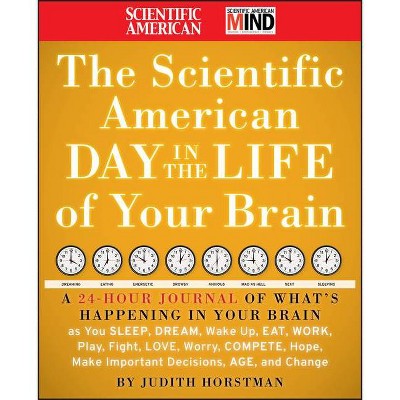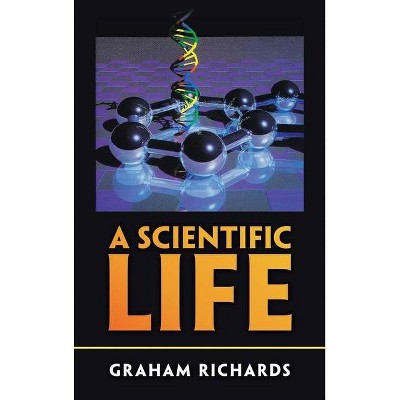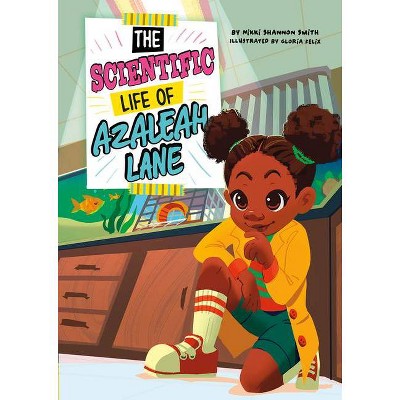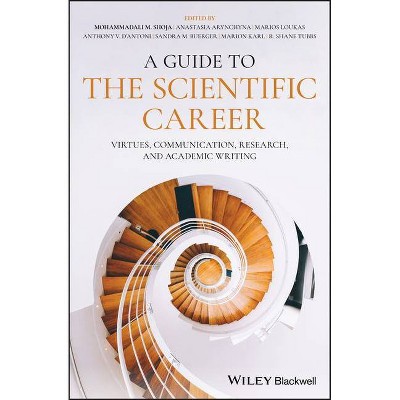The Scientific American Day in the Life of Your Brain - by Scientific American & Judith Horstman (Hardcover)

Similar Products
Products of same category from the store
AllProduct info
<p/><br></br><p><b> Book Synopsis </b></p></br></br>Have you ever wondered what's happening in your brain as you go through a typical day and night? This fascinating book presents an hour-by-hour round-the-clock journal of your brain's activities. Drawing on the treasure trove of information from Scientific American and Scientific American Mind magazines as well as original material written specifically for this book, Judith Horstman weaves together a compelling description of your brain at work and at play. <p><i>The Scientific American Day in the Life of Your Brain</i> reveals what's going on in there while you sleep and dream, how your brain makes memories and forms addictions and why we sometimes make bad decisions. The book also offers intriguing information about your emotional brain, and what's happening when you're feeling love, lust, fear and anxiety--and how sex, drugs and rock and roll tickle the same spots.</p> <p>Based on the latest scientific information, the book explores your brain's remarkable ability to change, how your brain can make new neurons even into old age and why multitasking may be bad for you.</p> <p>Your brain is uniquely yours - but research is showing many of its day-to-day cycles are universal. This book gives you a look inside your brain and some insights into why you may feel and act as you do.</p> <p><i>The Scientific American Day in the Life of Your Brain</i> is written in the entertaining, informative and easy-to-understand style that fans of Scientific American and Scientific American Mind magazine have come to expect.</p><p/><br></br><p><b> From the Back Cover </b></p></br></br><p><b>The Scientific American Day in the Life of Your Brain</b> <p>Have you ever wondered what's happening in your brain as you go through a typical day and night? This fascinating book presents an hour-by-hour, round-the-clock journal of your brain's activities. Drawing on the treasure trove of information from <i>Scientific American</i> and<i> Scientific American Mind</i> magazines as well as original material written specifically for this book, Judith Horstman weaves together a compelling description of your brain at work and at play. <p><i>The</i> Scientific American <i>Day in the Life of Your Brain</i> reveals what's going on in there while you sleep and dream, how your brain makes memories and forms addictions, and why we sometimes make bad decisions. The book also offers intriguing information about your emotional brain and what's happening when you're feeling love, lust, fear, and anxiety--and how sex, drugs, and rock and roll tickle the same spots. <p>Based on the latest scientific information, the book explores your brain's remarkable ability to change, how your brain can make new neurons even into old age, and why multitasking may be bad for you. <p>Your brain is uniquely yours--but research is showing that many of its day-to-day cycles are universal. This book gives you a look inside your brain and some insights into why you may feel and act as you do. <p><i>The</i> Scientific American <i>Day in the Life of Your Brain</i> is written in the entertaining, informative, and easy-to-understand style that fans of <i>Scientific American</i> and <i>Scientific American Mind</i> magazines have come to expect.<p/><br></br><p><b> Review Quotes </b></p></br></br><br>In this thorough health and science overview, journalist Horstman (<i>Overcoming Arthritis</i>) reviews a full day of brainwork by accounting for the mental processes of everyday activities, arranged by hour, beginning with 5 a.m. and "coming to consciousness." Fascinatingly, Horstman shows how, as hormone and neurotransmitter levels change throughout the day, there may be an optimal time for everything. Moving through the workday, Horstman discusses stress, decision-making, hunger and fatigue, ADHD and more, before returning home to cover music, humor, sex, fear and sleep. Horstman's lively prose is packed with useful information: meditation increases attention while delaying aging; brain exercise and a strong social network decrease the odds of developing dementia; diet can quell morning crabbiness, increase afternoon focus, and promote sleep. Multitasking, as <b>Horstman</b> explains, is less like an efficient model of problem solving and more like channel-surfing; stress, she says, "may be the single worst thing your brain does to your heart." Information-packed and fully referenced, this <i>Scientific American</i> publication is perfect for anyone with interest in mind/body interaction, mental health or aging. (<i>PublishersWeekly.com</i>, August 24, 2009) <p><b>STARRED REVIEW</b><br /> Drawing on neurology articles from <i>Scientific American</i> and <i>Scientific American Mind</i>, science journalist Horstman creates a seamless and fascinating look at our brain's functioning throughout the day, adeptly noting cycles and processes that may occur by mentioning them in a time context that makes sense. Beginning her exploration at 5 a.m., when the brain begins to return to consciousness, she bases the chapters on each hour in a 24-hour period and groups hours into sections related to typical activities, such as Winding Down from 9 p.m. to midnight. She examines how and when other bodily processes and functions, such as hunger, impact the brain. Drops in blood sugar, for example, also indicate lowered levels of serotonin. The explanations are easy to read, and they incorporate anecdotes and callouts that deftly explain neuroscientific content. <b>VERDICT</b> Appealing to lay scientists, <i>Scientific American</i> readers, and all those interested in how to care for their brain as it matures and ages, this book will be a popular science title. (<i>Library Journal</i>)</p><br><p/><br></br><p><b> About the Author </b></p></br></br><p><b>JUDITH HORSTMAN</b> is an award-winning journalist whose work has appeared in publications ranging from <i>USA Today</i> to the <i>Primer on the Rheumatic Diseases</i> (twelfth edition). Horstman's work has also appeared in publications by Harvard, Stanford, and Johns Hopkins universities, numerous magazines, and on the Internet. She has been a Washington correspondent, a Fulbright scholar, a journalism profesor, and is the author of four books.
Price History
Price Archive shows prices from various stores, lets you see history and find the cheapest. There is no actual sale on the website. For all support, inquiry and suggestion messages communication@pricearchive.us



















